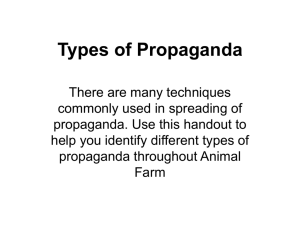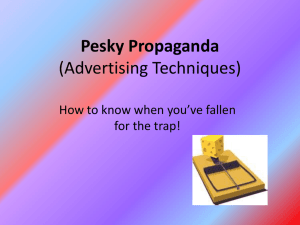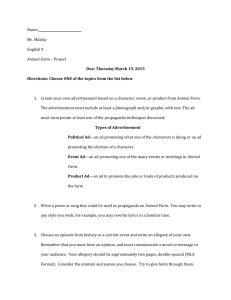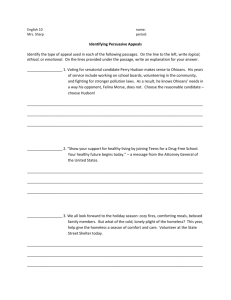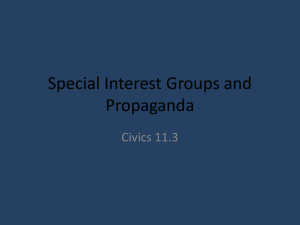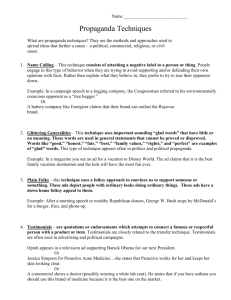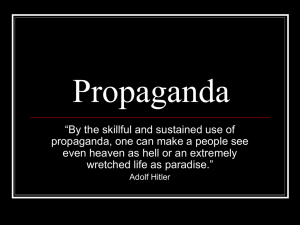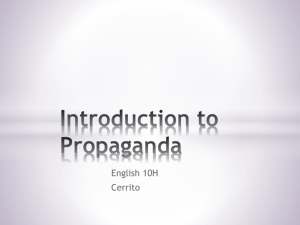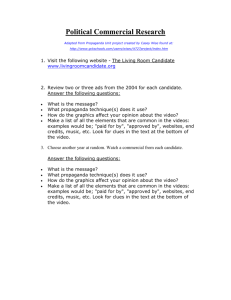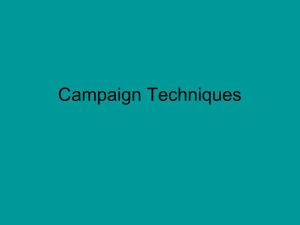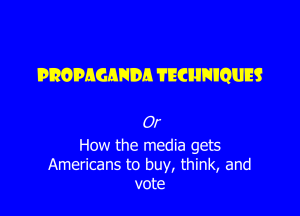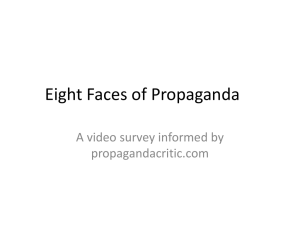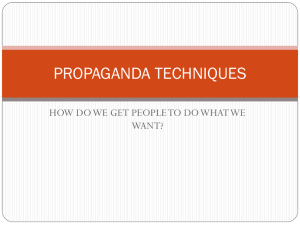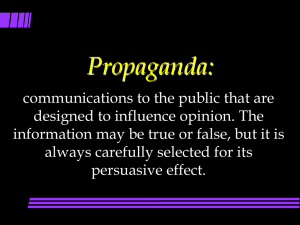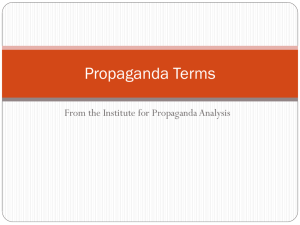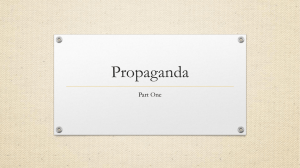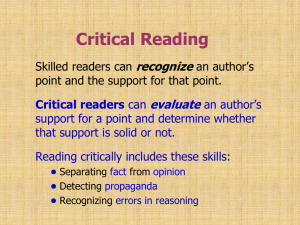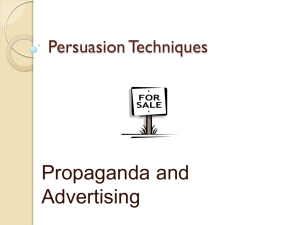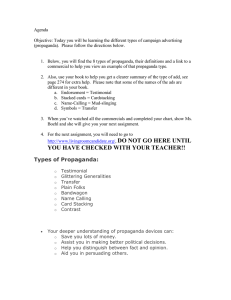Types of Propaganda - Moore Middle School
advertisement
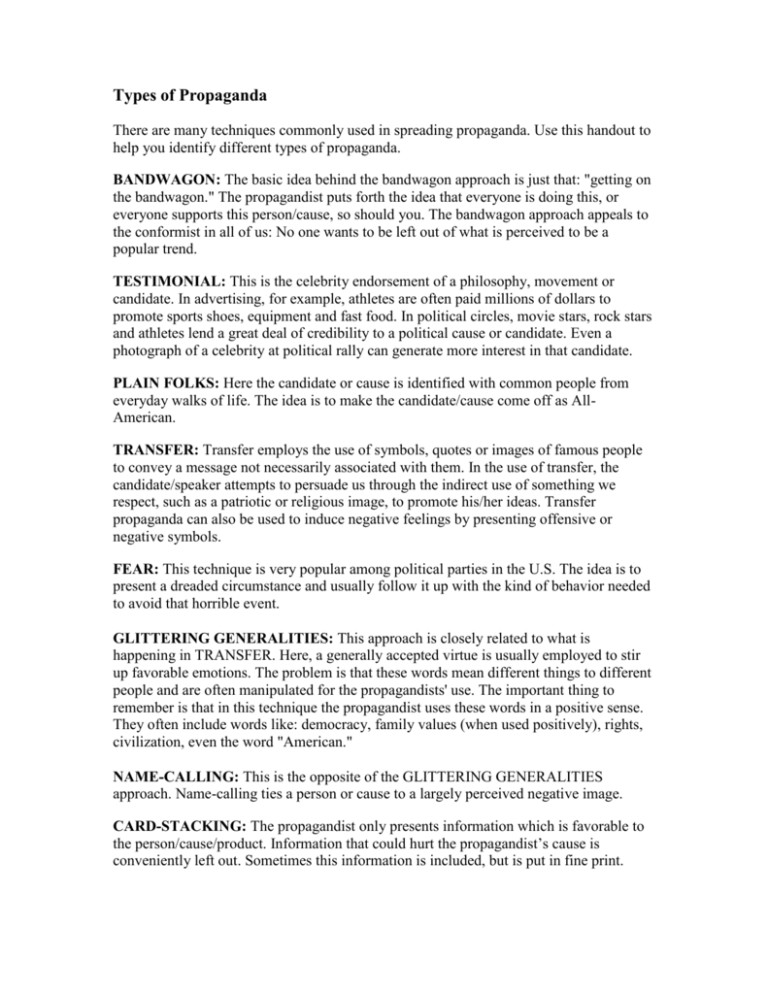
Types of Propaganda There are many techniques commonly used in spreading propaganda. Use this handout to help you identify different types of propaganda. BANDWAGON: The basic idea behind the bandwagon approach is just that: "getting on the bandwagon." The propagandist puts forth the idea that everyone is doing this, or everyone supports this person/cause, so should you. The bandwagon approach appeals to the conformist in all of us: No one wants to be left out of what is perceived to be a popular trend. TESTIMONIAL: This is the celebrity endorsement of a philosophy, movement or candidate. In advertising, for example, athletes are often paid millions of dollars to promote sports shoes, equipment and fast food. In political circles, movie stars, rock stars and athletes lend a great deal of credibility to a political cause or candidate. Even a photograph of a celebrity at political rally can generate more interest in that candidate. PLAIN FOLKS: Here the candidate or cause is identified with common people from everyday walks of life. The idea is to make the candidate/cause come off as AllAmerican. TRANSFER: Transfer employs the use of symbols, quotes or images of famous people to convey a message not necessarily associated with them. In the use of transfer, the candidate/speaker attempts to persuade us through the indirect use of something we respect, such as a patriotic or religious image, to promote his/her ideas. Transfer propaganda can also be used to induce negative feelings by presenting offensive or negative symbols. FEAR: This technique is very popular among political parties in the U.S. The idea is to present a dreaded circumstance and usually follow it up with the kind of behavior needed to avoid that horrible event. GLITTERING GENERALITIES: This approach is closely related to what is happening in TRANSFER. Here, a generally accepted virtue is usually employed to stir up favorable emotions. The problem is that these words mean different things to different people and are often manipulated for the propagandists' use. The important thing to remember is that in this technique the propagandist uses these words in a positive sense. They often include words like: democracy, family values (when used positively), rights, civilization, even the word "American." NAME-CALLING: This is the opposite of the GLITTERING GENERALITIES approach. Name-calling ties a person or cause to a largely perceived negative image. CARD-STACKING: The propagandist only presents information which is favorable to the person/cause/product. Information that could hurt the propagandist’s cause is conveniently left out. Sometimes this information is included, but is put in fine print.
